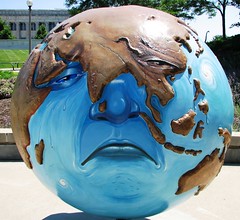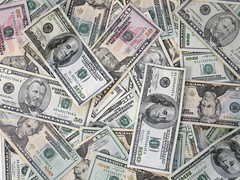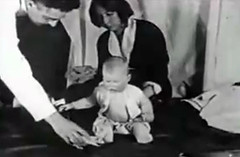| 5887121315 | The First Estate | The clergy | | 0 |
| 5887121316 | The Second Estate | The nobility | | 1 |
| 5887121317 | The Third Estate | The commoners of France that consisted of prosperous merchants and lawyers as well as peasants, rural agricultural workers, urban artist, and unskilled day laborers. | | 2 |
| 5887121321 | Rene de Maupeou | In 1768, Louis XV appointed this tough career official as chancellor and ordered him to crush any judicial opposition. He abolished the existing parlements and exiled the outspoken members of the Parlement of Paris to the provinces. He created new and docile parlements of royal officials, and began once again to tax the privileged groups. | | 3 |
| 5887121324 | Louis XVI | King of France from 1774 to 1792; his failure to grant reforms led to the French Revolution; he and his queen, Marie Antoinette, were guillotined. | | 4 |
| 5887121325 | The Estates General | A legislative body in pre-revolutionary France made up of representatives of each of the three estates; it was called into session in 1789 for the first time since 1614. | | 5 |
| 5887121327 | National Assembly | The first French revolutionary legislature, made up primilarily of representatives of the third estate and a few from the nobility and clergy, in session from 1789 to 1791. | | 6 |
| 5887121328 | The Great Fear | The fear of noble retaliation against peasant uprisings that seized the French countryside and led to further revolt, where peasants ransacked manors and burned feudal documents. | | 7 |
| 5887121329 | Constitutional Monarchy | A form of government in which the king retains his position as head of state, while the authority to tax and make new laws resides in an elected body. | | 8 |
| 5887121330 | Jacobin club | The most influential political club in revolutionary France whose members were well-educated radical republicans, | | 9 |
| 5887121331 | Second Revolution | From 1792 to 1795, the second phase of the French Revolution, during which the fall of the French monarchy introduced a rapid radicalization of politics. | | 10 |
| 5887121332 | Girondists | A moderate political group that fought for control of the French National Convention in 1793. | | 11 |
| 5887121333 | The Mountain | The French National Convention's radical faction led by Robespierre, which seized legislative power in 1793. | | 12 |
| 5887121334 | Sans-Culottes | The laboring poor of Paris, so called because the men wore trousers instead of the knee breaches of the aristocracy and middle class; the word came to refer to the militant radicals of the city. | | 13 |
| 5887121335 | Reign of Terror | The period from 1793 to 1794 during which Robespierre's Committee of Public Safety tried and executed thousands suspected of treason and new revolutionary culture was imposed. | | 14 |
| 5887121336 | Dechristianization | Campaign to eliminate Christian faith and practice in France undertaken by the revolutionary government. | | 15 |
| 5887121337 | Thermidorian Reaction | Backlash to the violence of the Reign of Terror in 1794, resulting in Robespierre and the loosening of economic controls. | | 16 |
| 5887121338 | Napoleonic Code | (The Civil Code of 1804) This French civil code that reasserted the 1789 principles of the equality of all male citizens before the law and the absolute security of wealth and private property as well as restricting rights accorded to women by previous revolutionary laws. | | 17 |
| 5887121340 | Continental System | A blockade imposed by Napoleon to halt all trade between continental Europe and Britain, thereby weakening the British economy and military . | | 18 |
| 5887121341 | Abbe Sieyes | Wrote the famous pamphlet "What is the Third Estate?" where he argued that the nobility was a tiny over-privileged minority and that the neglected third estate constituted the true strength of the French nation. | | 19 |
| 5887121343 | The Tennis Court Oath | On June 20, 1788 the delegates of the third estate, excluded from their hall because of "repairs," moved to a a large tennis court were they swore this famous declaration to keep meeting until a constitution had been written. | | 20 |
| 5887121344 | The Bastille | On July 14, 1789, several hundred french people marched to this location to search for weapons and gunpowder. | | 21 |
| 5887121346 | Marquis de Lafayette | After the storming of the Bastille, Louis XVI agreed to the formation of the National Guard under the leadership of this man who was already known as a champion of liberty because of his involvement with the American Revolution. Also, the author of the Declaration of the Rights of Man. | | 22 |
| 5887121347 | Declaration of the Rights of Man and Citizen | Marquis de Lafayette, with the aid of Thomas Jefferson, wrote this document that used the language of the Enlightenment to declare the political sovereignty did not rest in the hands of a monarch but rather in the nation at large. It also stated that all men were to enjoy all rights and responsibilities and were entitled to freedom of religion, press, and to engage in any economic activity of their choosing. | | 23 |
| 5887121348 | The Rights of Women | Published by Olympe de Gouges it argued that women should enjoy such fundamental rights as the right to be educated, to control their own property, and to initiate divorce. | | 24 |
| 5887121349 | Vindication of the Rights of Women | Book by Mary Wollstonecraft that argued that instead of viewing women as ornaments to society or property to be traded in marriage, they are human beings deserving of the same fundamental rights as me | | 25 |
| 5887121350 | Civil Constitution of the Clergy (Church) | In July 1970, the King Louis XVI was forced, to his horror, to accept the passage of this legislation that basically made the Church a department of the state. Bishops were to be chosen by assemblies of parish priests, who themselves were to be elected by their parishioners. | | 26 |
| 5887121353 | Committee of Public Safety | Political body of the French Revolution that gained virtual dictatorial control over France during the Reign of Terror (September 1793 to July 1794) | | 27 |
| 5887121355 | Robespierre | A lawyer whose anti-monarchical sentiments may have started at the age of eleven, when a coach carrying the royal family splashed him with mud just as he was about to read some Latin verses he had written in their honor. A Jacobin, and the dictatorial leader of the Committee of Public Safety, he was eventually killed on his very own national razer on July 28, 1794 . | | 28 |
| 5887121357 | Charlotte Corday | To enhance the Mountain's control over the National Convention, this Girondin sympathizer stabbed to death Jean-Paul Marat, a radical journalist that was a hero of the sans-culottes | | 29 |
| 5887121359 | Cult of the Supreme Being | To move people away from what he thought was corrupting the influence of the Church, Robespierre established this to turn the Cathedral of Notre Dome into a Temple of Reason. | | 30 |
| 5887121361 | The Directory | The final stage of the French Revolution or the name of the government produced by the Thermidorians, the label for those who were opposed to Robespierre. It was led by an executive council of five men who possessed the title of director. | | 31 |
| 5887121362 | Napoleon Bonaparte | This young general, saved the Directory by putting down the rebellion in Paris. He later overthrew French Directory in 1799 and crowned himself emperor of France in 1804. Failed to defeat Great Britain, and his failure to invade Russia lead to his abdication in 1814. Returned to power briefly in 1815 but was defeated and died in exile. | | 32 |
| 5887121363 | First Consul | Napoleon's self-imposed title after he overthrew the Directory | | 33 |
| 5887121364 | Plebiscite | A new constitution consolidating his position was overwhelmingly approved in this form of voting otherwise known as a vote by the people. | | 34 |
| 5887121365 | Concordat of 1801 | This agreement between Napoleon and Pope Pius VII gave the pope the right for French Catholics to practice their religion freely, but Napoleon gained political power: his government now nominated bishops, paid the clergy, and exerted great influence over the church in France. | | 35 |
| 5887121366 | Treaty of Amiens | Agreement between the British and the French in 1802 which allowed France to remain in control of Holland, the Austrian Netherlands, the west bank of the Rhine, and most of the Italian peninsula. A clear diplomatic triumph for Napoleon, and a sign of peace with honor and profit. | | 36 |
| 5887121367 | Battle of Trafalgar | On October 21 of 1805, Admiral Nelson of England died in this struggle between France that ultimately destroyed the French fleet and with it any hope of the French landing in England. | | 37 |
| 5887121369 | Alexander I | The Russian Tsar that decided that it was necessary to make peace with Napoleon after the Battle of Austerlitz. He signed the treaty of Tilsit with Napoleon | | 38 |
| 5887121371 | Third Coalition | The alliance between the countries of Austria, Russia, and Great Britain against the forces of Napoleon. | | 39 |
| 5887121372 | German Confederation of the Rhine | After the third coalition collapsed Napoleon abolished many of the tiny German states as well as the Holy Roman Empire when he established this union of fifteen German states minus Austria, Prussia, and Saxony. | | 40 |
| 5887121374 | The Hundred Days | Marked the period between Emperor Napoleon I of France's return from exile on Elba to Paris on 20 March 1815 and the second restoration of King Louis XVIII on 8 July 1815. Ended at the Battle of Waterloo. | | 41 |
| 5887121376 | Battle of Waterloo | On June 18, 1815 the Duke of Wellington along with Marshal Blucher of the Prussian Forces defeated Napoleon's final battle and marked the end of The Hundred Days. | | 42 |
| 5887121377 | Levee en Masse | Responding to continued military crisis during the French Revolutionary wars, the National Convention sought to call up more troops to defend the new republic in this declaration from the National Convention | | 43 |
| 5887121378 | Decrees of August 4 | These were nineteen decrees or articles made in August 1789 by the National Constituent Assembly during the French Revolution. Offered equal taxation and abolished feudalism. | | 44 |
| 5887121379 | Elba | Napoleon was first exiled to this Mediterranean island where he was allowed to keep a small army and maintain his title of Emperor. | | 45 |
| 5887121380 | St. Helena | The place where Napoleon was exiled once again, in the distant island where he died in 1821. | | 46 |
| 5887121381 | Grand Armee | The gigantic army of 600,000 Napoleon took to Russia in 1812 , and where eventually mostly killed off in the retreat from the cold winter of Russia. | | 47 |
| 5887121382 | Flight to Varennes | King Louis XVI of France, his wife Marie Antoinette, and their immediate family attempted unsuccessfully to escape from Paris in order to initiate a counter-revolution. | | 48 |
| 5887121383 | Marie Antoinette | Queen of France (as wife of Louis XVI) who was unpopular her extravagance and opposition to reform contributed to the overthrow of the monarchy; she was guillotined along with her husband (1755-1793) | | 49 |
| 5887121384 | September Massacres | A wave of mob violence which overtook Paris in late summer 1792, during the French Revolution. By the time it had subsided, half the prison population of Paris had been executed: some 1,200 trapped prisoners, including many women and young boys. | | 50 |



















































































































